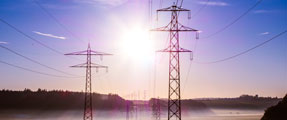On October 16, 2014, the Federal Energy Regulatory Commission (FERC) issued two orders accepting Bonneville Power Administration’s (BPA) controversial oversupply management protocol and oversupply rates. FERC accepted BPA’s filings as temporary solutions to address the problem of high levels of generation that exceeded the available end use consumer loads on BPA’s system. This is called “oversupply” because BPA has too much generation. FERC found that BPA’s policy to displace and compensate wind generators during oversupply events is equitable and results in comparability in the provision of transmission service.
Utilities like BPA must ensure that electric generation matches the electric loads in their balancing authority. Loads are the amount of power used by end use consumers. BPA’s system is extremely hydro dependent, which can fluctuate significantly depending upon seasonal water conditions. During the spring run off period, BPA typically has more electric generation than it needs to serve its own loads. Historically, BPA would offer this extra hydroelectric generation to utilities in the region for free or reduced cost. These regional utilities would then reduce generation at their own gas and coal generation facilities and use the free BPA hydropower to serve their own loads. If BPA could not give the hydropower away for free, then BPA could “spill” the water over its dams and not generate electricity.
Greater protections for fish under the Endangered Species Act and Clean Water Act have imposed constraints upon how BPA operates its hydro system. BPA’s ability to spill water over its dams is limited because high water flows can harm fish. Water spilling over a dam creates air bubbles that dissolve oxygen into the water. High levels of dissolved oxygen can cause gas bubble trauma that harms and even kills fish. BPA cannot spill water that results in dissolved oxygen levels that exceeds the standards set by the states of Oregon and Washington. Therefore, BPA cannot always spill water during high water conditions, but must sometimes use the water to generate electricity.
Increased levels of wind generation have further complicated BPA’s ability to manage situations with high levels of water and low loads. From 2005 to 2011, over 3,000 megawatts of wind generation was built in BPA’s balancing authority, with much of it being exported to serve loads outside of BPA’s balancing authority. Critical parts of the economic model for many wind generation facilities are production tax credits and renewable energy certificates. Wind generators can only obtain these benefits if they actually produce and sell their power, and they do not want to have their power replaced by free BPA power. In contrast, it is economically efficient for traditional gas and coal generation to back down their facilities and take free BPA hydropower because they can save operational costs. Therefore, wind generators (unlike traditional fossil fuel generators) do not want to reduce their generation because they will loose the revenues associated with their production tax credits and renewable energy certificates.
In 2011, BPA adopted a policy under which it would displace wind generators during high water and low load conditions. Wind generators and some utilities challenged BPA’s actions at FERC. The wind generators argued that BPA had curtailed and utilized their firm transmission rights without compensation so that BPA could deliver its own generation. There have been a number of proceedings before BPA and at FERC, as well as appeals filed in the federal courts. FERC previously ruled in December 2011 that BPA’s policy of displacing wind generation with its own hydropower violated section 211A of the Federal Power Act because it did not comparably treat generation resources interconnected to Bonneville’s transmission system. FERC’s action was the first time that it applied Section 211A to a traditional non-jurisdictional entity like BPA.
BPA developed a revised policy that compensated wind generators for their lost production tax credits and renewable energy certificates, and adopted new transmission rates to recover these costs. FERC’s October 16, 2014 orders accepted BPA’s revised policy regarding treatment of oversupply events and its oversupply rates. BPA will continue to displace wind generation on its transmission system during high water events, but it will compensate the wind generators for certain lost revenues, including loss of production tax credits and renewable energy certificates. In order to pay the wind generators lost revenues, BPA established new oversupply rates that will be collected from all transmission customers that are scheduled to use its transmission system during oversupply events. From a practical perspective, this results in BPA’s traditional preference customers (publicly owned utilities and cooperatives) paying a significant portion of the oversupply costs.
Despite all the acrimony and continued litigation, the amount of costs associated with lost wind generation revenues has been far less than expected. BPA only displaced wind generation in 2012, with total oversupply costs of about $2.7 million. BPA initially estimated that the cost of paying the value of lost production tax credits and renewable energy certificates could be up to $50 million in 2012.
While FERC accepted BPA’s OMP and oversupply rates, FERC made it clear that it did so on a temporary basis. FERC urged BPA to work with impacted parties to come up with a permanent solution.
Disclaimer
These materials are intended to as informational and are not to be considered legal advice or legal opinion, nor do they create a lawyer-client relationship. Information included about previous case results does not assure a similar future result.


